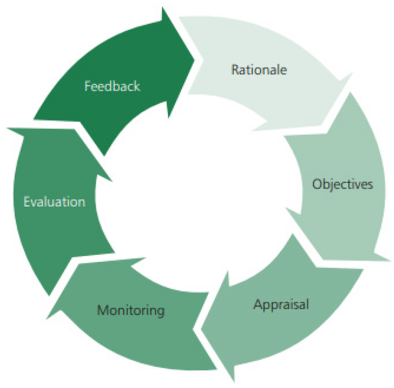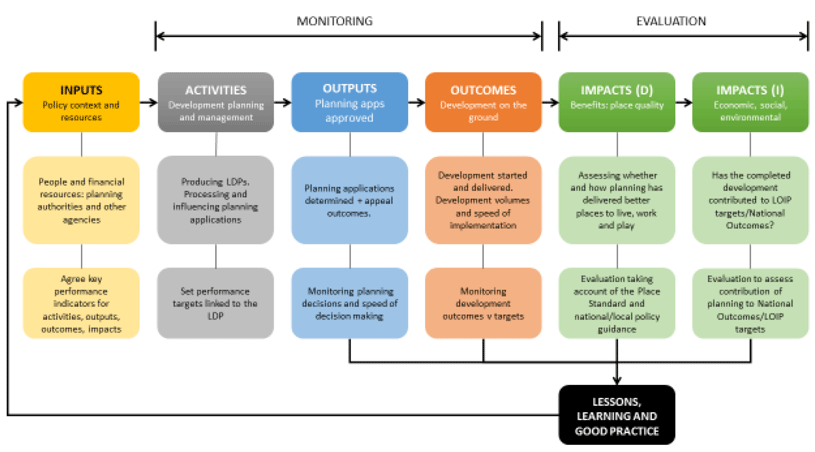Monitoring the outcomes of planning: a research study
Discusses issues related to performance management and informs future work on developing new approaches to assessing performance in the planning system.
6. A performance management framework for the planning system
6.1 Building on the principles set in Section 5, we used the consultations and the workshop to develop an illustrative performance management framework ( PMF) for the Scottish planning system. The model received a positive response from consultees, but we must stress again that this is not a fully worked-up proposal. It should be treated as a working draft and a platform for future policy development.
6.2 The model takes as its starting point the Treasury Green Book on appraisal and evaluation, a new edition of which has recently been published ( HM Treasury 2018). The Green Book is the recognised standard for public sector organisations in Scotland and the UK. [3] It sets out guidance which can be applied to ongoing programmes and services as well as one-off projects. The foundation of the Green Book approach is the ROAMEF performance management model shown in Figure 6-1.
Figure 6-1: The ROAMEF model

Source: HM Treasury
6.3 The Green Book states that every project and programme should pass through three key stages:
1. PLANNING AND DEVELOPMENT
- Rationale: what is the purpose of the intervention and why is it needed?
- Objectives: what specific objectives is it intended to deliver and how might we measure achievement?
- Appraisal: what are the options for achieving the objectives and which represents best value?
2. IMPLEMENTATION
- Monitoring: how is the implementation of the intervention progressing? is it on time and on budget, and are the planned outputs and outcomes being achieved?
- Evaluation: after an appropriate interval (or at an agreed review stage) what can we learn about the impact(s) of the programme, and has it delivered the benefits we intended?
3. LEARNING
- Feedback: what lessons can we learn from our monitoring and evaluation? has the intervention been successful? should it continue/be repeated – or should we do things in a different way?
6.4 We have translated the relevant ROAMEF principles and the logic chain ( Figure 5-2) into a draft performance management framework for the Scottish planning system. The model is summarised in Figure 6-2.
Figure 6-2: Draft performance management framework for the Scottish planning system

6.5 Unlike the Planning Performance Framework, which is concerned primarily with the planning process as measured by activities and outputs, the PMF would span the whole planning system from inputs to impacts, as well as a feedback loop to capture and disseminate lessons from experience – "what works and what doesn't". Figure 6-3 shows how the proposed PMF would expand the scope of performance management by focusing on outcomes and impacts.
Figure 6-3: Expanding the scope of performance management – from PPF to PMF

Contact
There is a problem
Thanks for your feedback